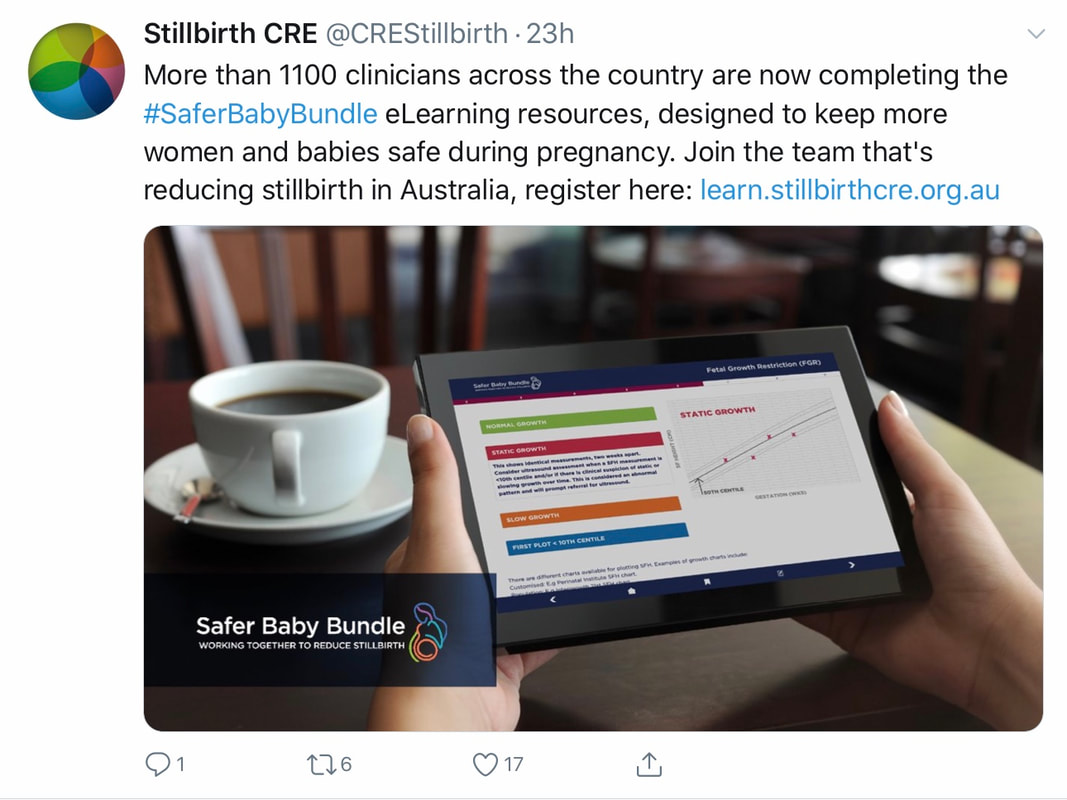- 33,434 midwives and 2,094 Obstetrician /Gynaecologists would... not to mention
- Most of the 26,772 GPs who would usually have at least something to do with pregnant women even if its confirming the pregnancy, managing an acute illness during pregnancy, providing advice about quitting smoking, sleeping position or what to do about altered fetal activity, all important opportunities to discuss reducing stillbirth with pregnant women.
- Also the students who are currently studying: Midwifery 4065, 248 a dual nursing /midwifery degree and 22,540 studying medicine
Strategies for increasing clinician engagement with this vital new resource…anyone?

 RSS Feed
RSS Feed
